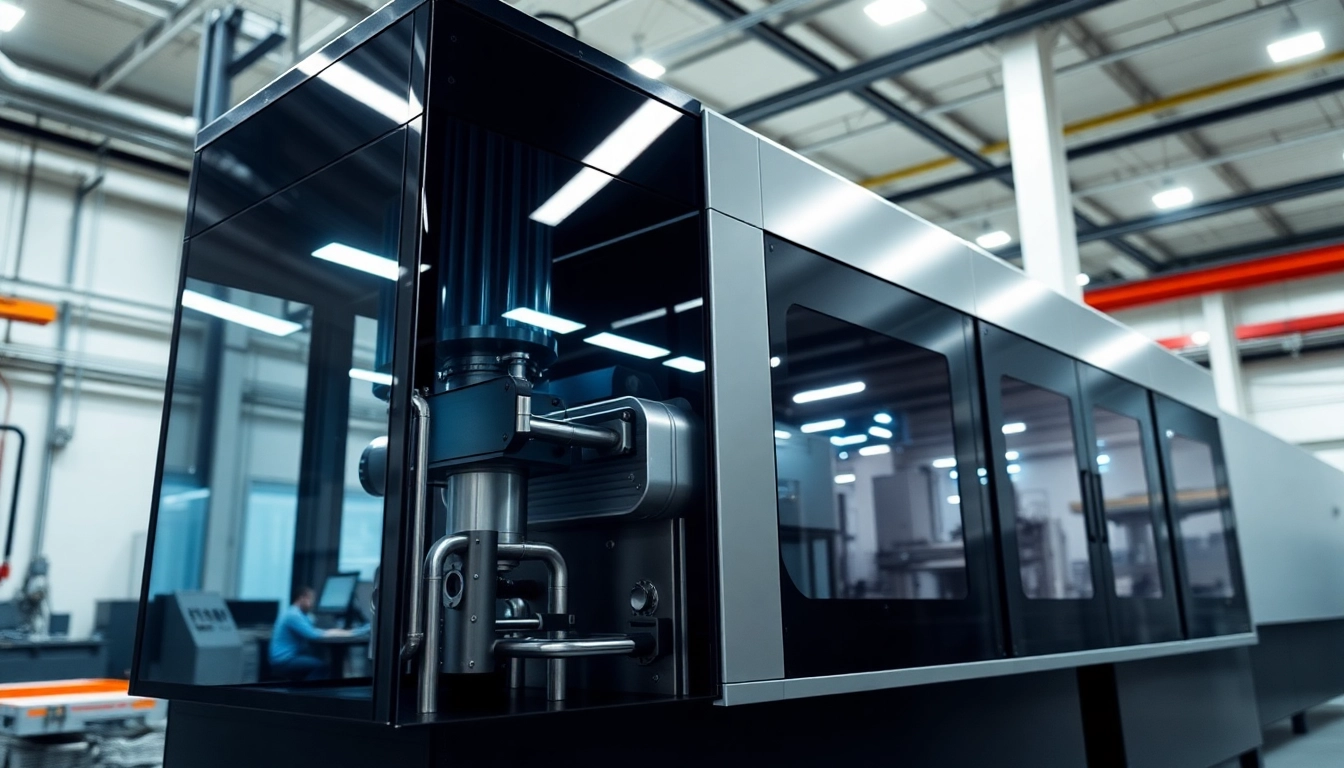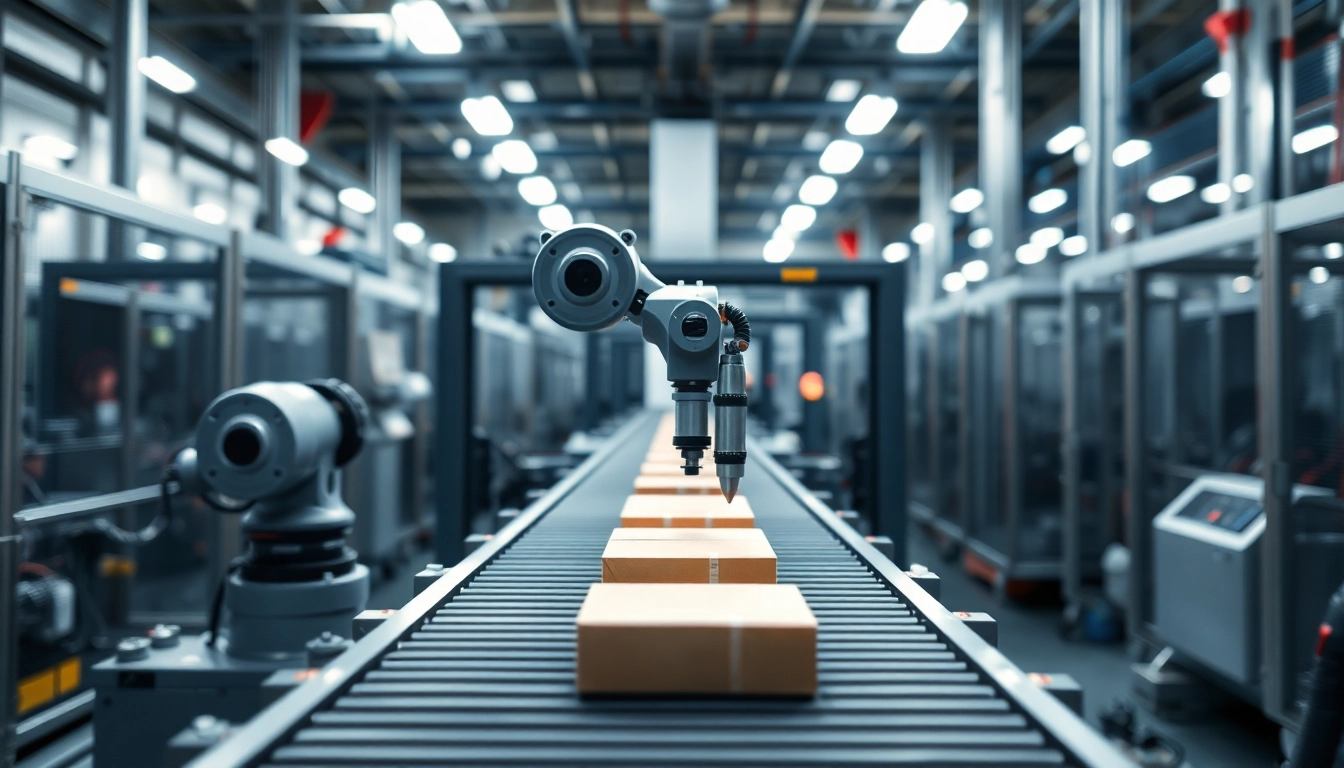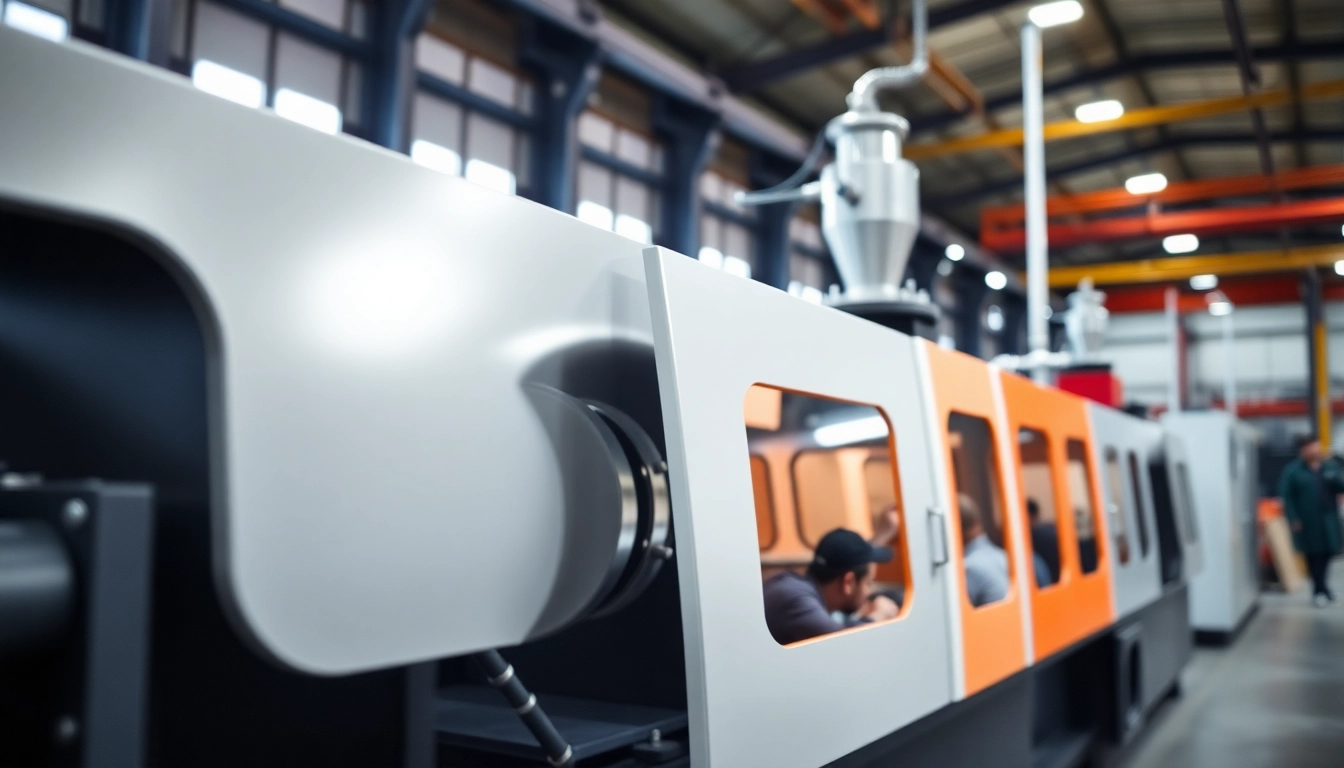Understanding Blow Molding Machines
What is a Blow Molding Machine?
A blow molding machine is a sophisticated piece of equipment designed to manufacture hollow plastic objects, primarily containers like bottles, jars, and tanks. This process involves inflating a heated tube of plastic, known as a parison, against the walls of a mold to achieve the desired shape. The efficacy of a blow molding machine lies in its ability to produce items quickly and with high precision, making them essential in industries such as food and beverage, pharmaceuticals, and household goods.
Choosing the right Blow Molding Machine is vital for manufacturers looking to enhance productivity and meet specific market needs. The technology continues to evolve with advancements, allowing for the creation of more complex shapes and designs than ever before.
Types of Blow Molding Machines
Blow molding machines can be categorized into three primary types: extrusion blow molding (EBM), injection blow molding (IBM), and injection stretch blow molding (ISBM). Each type has its unique features and applications:
- Extrusion Blow Molding (EBM): This method involves extruding a parison and then inflating it within a mold. EBM is favored for producing large containers and parts, as its efficiency allows large batches to be manufactured quickly.
- Injection Blow Molding (IBM): In this process, the plastic is first injected into a mold to form a preform, which is then blown into its final shape using a secondary blowing process. This type is ideal for creating smaller, more complex shapes with greater precision.
- Injection Stretch Blow Molding (ISBM): A combination of both injection and blow molding techniques, ISBM uses preforms created from injection molding which are then stretched and blown into shape. This allows for greater strength and is commonly used in producing PET bottles.
How Blow Molding Works
The process of blow molding begins with heating plastic pellets until they reach a molten state. Once molten, the material is either extruded or injected into a mold to form a parison or a preform. The next step involves the introduction of air into the parison or preform, which expands the plastic against the mold’s walls. Cooling occurs shortly after, solidifying the product and allowing for its removal from the mold. This process can be automated, ensuring consistent quality and efficiency in production.
Key Benefits of Using Blow Molding Machines
Cost-Effectiveness
One of the most significant advantages of using blow molding machines is their ability to produce high volumes of parts at a lower cost per unit. The rapid production cycle provided by these machines reduces labor costs and material waste, making it a financially viable choice for manufacturers. Consequently, companies can enjoy enhanced margins while still offering competitive pricing on their products.
Production Speed and Efficiency
Blow molding machines are engineered for high-speed production, capable of creating thousands of units per hour, depending on the size and complexity of the items being produced. This efficiency can help businesses scale operations and meet growing demands without sacrificing quality.
Versatility in Manufacturing
Blow molding technology is not only adept at producing standard containers but is also capable of handling complex shapes and sizes. This versatility allows manufacturers to diversify their product offerings, catering to different industries and consumer needs. From small single-use bottles to large industrial tanks, the adaptability of blow molding machines enables efficient production across various sectors.
Choosing the Right Blow Molding Machine for Your Needs
Factors to Consider
When selecting a blow molding machine, manufacturers must consider several factors to ensure they choose the best option for their specific needs:
- Product Type: Different products require different types of blow molding processes. Understanding whether extrusion, injection, or stretch blow molding is best suited for your application is crucial.
- Production Volume: Assessing the anticipated production volumes can help determine the necessary capacity and output speed of the machine.
- Material Compatibility: The types of plastics used in production can affect machine performance. Ensuring compatibility will aid in achieving optimal results.
- Maintenance Requirements: Consider the maintenance needs and service support for the machine to ensure longevity and minimize downtime.
- Cost and Budget: A clear understanding of budget constraints will guide the decision-making process regarding machine selection and capabilities.
Comparing Different Types
Comparative analysis of blow molding technologies can reveal the best option for a specific use case. For example, while EBM is perfect for volume processes with simple shapes, IBM and ISBM are better for intricate designs requiring high precision. Manufacturers should weigh the pros and cons of each method based on their specific product requirements and manufacturing capabilities.
Manufacturer Insights
When selecting a blow molding machine, it’s imperative to consider the reputation and expertise of the manufacturer. Some of the industry’s leaders, like Wilmington Machinery and Parker, have established themselves through innovative solutions and high-quality products. Engaging with manufacturers who offer robust support and training can also prove advantageous in streamlining operations and optimizing machine usage.
Maintenance and Troubleshooting for Blow Molding Machines
Routine Maintenance Tips
Regular maintenance is vital to the longevity and efficiency of blow molding machines. Here are some essential maintenance tips:
- Daily Inspections: Operators should conduct daily checks to ensure that the machine is functioning correctly, looking for any unusual noises or vibrations.
- Cleaning: Regular cleaning of molds and filters will prevent contamination and quality issues with the output products.
- Lubrication: Keep all moving parts lubricated to ensure smooth operation and reduce wear and tear.
- Software Updates: Regularly updating machine software can enhance performance and improve operational efficiency.
Common Issues and Solutions
Blow molding machines may experience various issues that can hinder production. Here are some common problems and their potential solutions:
- Defects in Product Quality: This could be due to improper temperature settings or mold wear. Regular calibration and mold inspections can mitigate this.
- Production Downtime: Frequent breakdowns may occur due to lack of maintenance. Establishing a preventive maintenance schedule can reduce downtime significantly.
- Material Handling Issues: Ensure proper drying and handling of plastic materials to avoid clogs or jams.
Upgrades and Modernization
Upgrading blow molding machines with the latest technology can enhance productivity and efficiency. Consider incorporating automation, such as robotics for handling and packaging, to streamline operations. Moreover, newer machines come equipped with energy-efficient features that can significantly reduce operational costs.
The Future of Blow Molding Technology
Innovations in Blow Molding Processes
The blow molding industry is witnessing rapid technological advancements aimed at improving efficiency and sustainability. Innovations such as 3D printing integration, advanced material formulations, and enhanced automation are shaping the future of production capacities. These advancements are set to revolutionize manufacturing processes, providing greater customization and reducing lead times.
Industry Trends and Predictions
Several trends are emerging in the blow molding sector that could redefine manufacturing standards. The rise of e-commerce is driving demand for lightweight and durable packaging, forcing manufacturers to adopt flexible production models. Additionally, companies are putting more emphasis on sustainability, prompting the development of biodegradable materials and recycling technologies.
Environmental Sustainability in Blow Molding
Environmental considerations are increasingly influencing production methods in blow molding. Companies are adopting sustainable practices by investing in machines that reduce energy consumption and produce less waste. Recycling initiatives and the use of recyclable materials are key components of this evolving landscape. As consumers become more eco-conscious, companies are responding by offering products that align with sustainable values.



